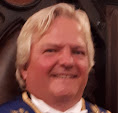It’s been a busy year. I’ve recently had another birthday. A year older and a year wiser. My hunt for Atlantis has taken an interesting turn. It seems academics are in agreement that something is puzzling about man’s evolution over the past 5,000 years, well, his sudden evolution. On one hand children have been sitting around campfires for many thousands of years asking their parents not only how we got here, but why are we here and where do we go when finished here. On the other, some people don’t care.
Those who do care intrigue me. They in fact are constantly searching for the truth. Among us today there are many, as there were yesterday, and the day before. Whence we came? Whither we are travelling? Not exactly common questions, though answers not reserved for common people. On a commercial level, I have seen heightening interest in my television show Before The Egyptians, and in fact its mother, Civilized Productions. In a weird twist of fate, very recently I met an author who writes books about the Knights Templar and their exploits in the New World.
In terms of business development, luck and timing (in the immortal words of Sting) led me to consider a board game called Templar Gold, which I did and now have secured the involvement of both my sister and her husband to create it. This game will be the first of many branded products that eventually will form a brand of entertainment, based in the values of these revered Knights – and the esoteric knowledge they acquired and protected.
We are producing a website to provide additional information on the author and his knowledge, as well as the venture and its offering, as we grow it. During the ‘dot com’, we wanted our sites (of promise and honour) to be fun, fast and friendly. Some things never change and, frankly, more sites should have that attitude no matter what they are selling. I digress slightly. Our game, in fact or games, will also be fun, fast and friendly… though Templar Gold will also be somewhat graphic, specifically when a player dies a horrid death or is killed by an opponent in a joust.
A few weeks ago a good friend had his pony-tail cut off to raise money for Windreach Farms. In addition, he donated his locks, grown over the past 19 years, to the Cancer Society’s program for children. The other day he and I were sitting down, relaxing, and enjoying our age. He said, while discussing tv shows, “remember the 80s?” – and those were (a) my days in Bermuda and (b) my days at the magazine – and then he followed with “imagine being in the army in the 80s” and the closed with “and not just any army, but the Canadian army…”. He left, after ten years service, just prior to our Canadian army teaching the Somalis a thing or thing about torture and violence.
Anyway, he told me three stories that had me on the floor howling. It’s been a long time since I had laughed quite that hard. I have to wonder about Hollywood, because it seems to me there are a lot of great stories out there that really need to be told. I know Disney said something amazing about stories, and dreams, and making them happen. I’m not comparing myself to Disney but it amazes me that so few among us really want to get off the treadmill and make things happen. I want to get off. Can you help?Labels: army, atlantis, dreams, hollywood, television, templar, truth

